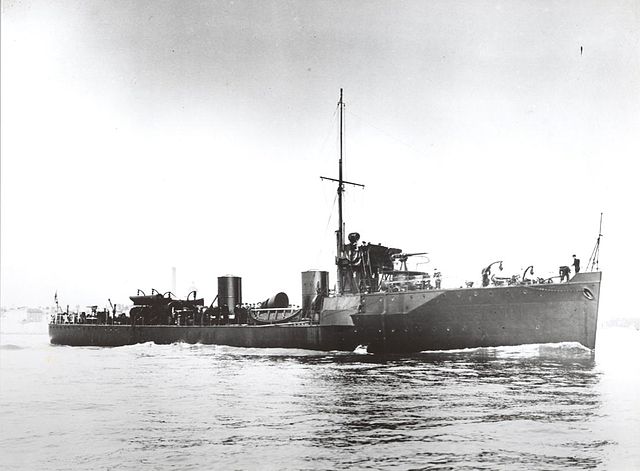The River-class destroyer was a class of torpedo boat destroyer built for the Royal Navy in the first few years of the 20th century, and which saw extensive service in World War I. These 37 vessels were all constructed to disparate builders' designs, just like the preceding classes.
HMS Eden, an early River-class destroyer, was unusual in being driven by steam turbines.
View at stern and the three propeller shafts of HMS Eden, 1904 laying in the dry dock
HMS Welland
In naval terminology, a destroyer is a fast, maneuverable, long-endurance warship intended to escort
larger vessels in a fleet, convoy, or carrier battle group and defend them against a wide range of general threats. They were originally conceived in 1885 by Fernando Villaamil for the Spanish Navy as a defense against torpedo boats, and by the time of the Russo-Japanese War in 1904, these "torpedo boat destroyers" (TBDs) were "large, swift, and powerfully armed torpedo boats designed to destroy other torpedo boats". Although the term "destroyer" had been used interchangeably with "TBD" and "torpedo boat destroyer" by navies since 1892, the term "torpedo boat destroyer" had been generally shortened to simply "destroyer" by nearly all navies by the First World War.
USS Arleigh Burke, the lead ship of her class of guided-missile destroyers.
The destroyers of the US Navy's Zumwalt-class, pictured here sailing with a Littoral combat ship (LCS) are the longest and heaviest destroyers currently in service.
The Italian Caio Duilio, belongs to the Horizon-class of Franco-Italian designed first-rate frigates.
Fernando Villaamil, credited as the inventor of the destroyer concept, died in action during the Battle of Santiago de Cuba in 1898.







